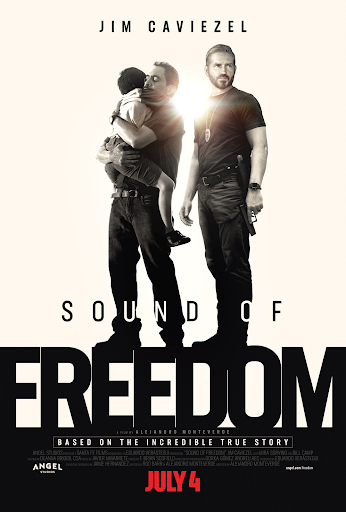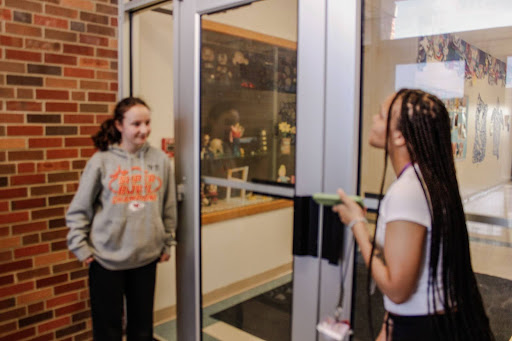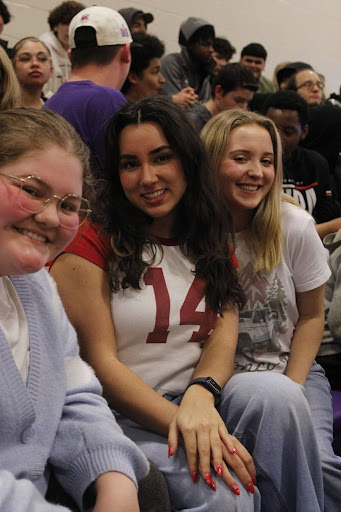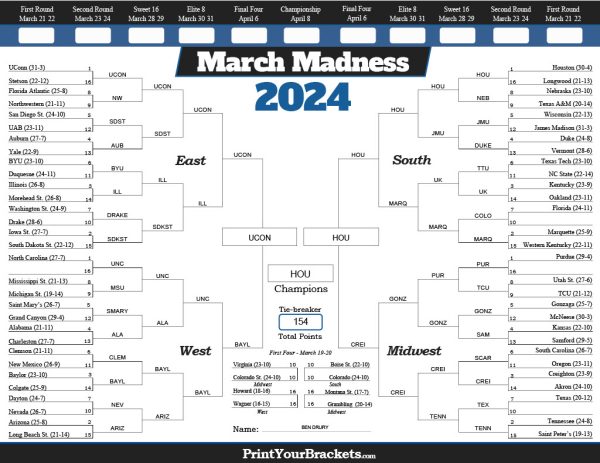#NeverAgain?
Has America become numb to gun violence within schools?
The odds of a flag being half-staff for a school shooting this year are 50-50. While school shootings are disheartening, it seems the nation is becoming numb to the violence. According to a poll by NPR, 68% of Americans report that they believe that there will be another mass shooting within the 2018 calendar year. As of February 15 in the United States, there have been 18 school shootings. There have been almost 300 school shootings, including elementary, middle school, high school, and college, in the United States since 2013, according to the gun control advocacy group: Everytown for Gun Safety.
About every six days since 2013, there has been a school shooting. However, it should be noted that school shootings are not a new thing in America. According to Drs. Garry Walz and Jeanne Bleuer of the ACA Knowledge Center, the earliest known school shooting in the United States took place in 1764 and was known as the Pontiac Rebellion School Massacre; out of 13 children enrolled in the school, only three survived.
During the 18th century, only around fifty K-12 shootings occured in the U.S.; this number increased to 207 during the 1900s. K12 Academics states that in just the first fifteen years of the new millennium, the United States has already had 152 K-12 shootings.
As shootings become more frequent, it is becoming more and more common to see mass shootings occur in schools.
“They’re going to where what we call soft targets – elementary schools, middle schools, or high schools, or any schools, buildings or businesses where there’s not a presence of law enforcement,” Officer Dutton said.
A suggested solution to this problem had been to arm teachers so that schools are better equipped to stop a shooter if one attempts to attack a school. Mountain View School District in Grangeville, a city in Idaho County, recently approved a policy that would allow faculty members to be trained as district security officers. These faculty members would be allowed to carry concealed firearms with the school property, if they finish the training program provided.
The National Rifle Association recently suggested that gun policies, such as the one implemented in the Mountain View School District, would better protect children attending school.
In a statement on their website, National School Shield, the NRA states: “When a threat occurs, a quick and timely response by law enforcement professionals is what everyone hopes for. However, in these situations — when time is clearly of the essence — we strongly believe that trained school personnel can also serve a vital role. The first to face the threat, they can lead and implement protocols designed to save lives.”
However, other organizations, such as Everytown for Gun Safety, have suggested that allowing firearms in a school weakens the trust between students and faculty members, increases the probability of an accidental shooting, and allows easier access for a student to obtain a gun and use it on innocent classmates and faculty members.
“I don’t think I’d want every teacher armed,” Officer Dutton said. “I don’t know if that’s necessary. And another piece of that too is you have got to have, one, teachers that are willing, and two, they also have to understand the significance and the responsibility that that’s going to involve by arming them.”
So what has caused this spike in school shootings in recent years? Well, that is up to one’s opinion. As gun violence continues in schools, some point a finger at the ease of access of semi-automatic and automatic weapons as the reason behind this increase in shootings, rather than schools unfortunately being soft targets.
“I think guns are definitely part of it but I don’t think gun laws are necessarily going to fix anything,” sophomore Christian McCormick said. “If you wanted a gun it’s going to be a lot easier to get it out of your dad’s closet and just walk in school the next day, but if he wants to get it he’s going to get it either way. There’s people for that. They’re still going to be on the streets whether you take them off or not.”
Many conservative government officials, such as Marco Rubio, Florida senator; Chris Christie, former governor of New Jersey; and even President Trump have suggested that tighter gun laws will not make a community more safe. Chicago is often pointed out for its higher gun violence in comparison to other cities with less restrictive gun laws. While, it is true that Chicago has stricter gun laws than many cities, it does not have the toughest gun regulations.
The Law Center to Prevent Gun Violence has ranked California first in tightness of its gun regulations. According to NPR, the state of California does not allow the open carry of guns and calls for background checks on the purchasing of private firearms, along with many other regulations.
“Some cities go even beyond that,” Hannah Shearer, a staff attorney at the Law Center to Prevent Gun Violence said. “San Francisco has a safe storage law, requiring that guns kept in the home are kept locked.”
NPR points out that Chicago is very close to multiple states that have weaker guns laws. Because of this, someone can purchase a gun with less resistance in Wisconsin or Indiana, and then bring it into the city of Chicago. This is an explanation for how gangs in cities are able to stockpile guns in communities where the everyday citizen will not be in possession of a firearm. Therefore, in order to have an effective gun regulation, any law would most likely need to be enforced at a federal level so that the purchasing a weapon is much more difficult.
Weak gun laws are a very prominent “cause” for mass shootings, according to more liberal leaning citizens. However, there are more variables that could potentially be behind the large quantity of mass killings in the United States.
Some suggest that school shooters commit the act because of the attention they will receive for their actions. Following school shootings, many news sources tend to delve deep into the shooter’s past, searching for a motive for their actions. This infamy seems to be appealing to those wishing to carry out violence against others. A July 2016 study published in the journal PLOS One found “significant evidence that mass killings involving firearms are incinted by similar events in the immediate past” — characterizing mass shootings as “contagious.”
Another explanation for school shootings is bullying.
The first big school shooting that shocked the nation was the Columbine shooting in 1999. The two students were considered gifted, but were nevertheless bullied excessively throughout their youth. Weeks before one of the most infamous school shootings in history, the two shooters were harassed by fellow students. Some of the two students’ former classmates had squirted condiments on them and then proceeded to shout homophobic slurs at the duo. Investigators deemed the repetitive harassment as a key motive behind the school shooting. Both Columbine shooters, along with many other school shooters, had been diagnosed with a mental illness prior to shootings, indicating that mental health and being bullied might have an effect on such extreme actions.
Bullying often starts at a young age, and can ultimately lead some teens to view the world in a different, darker way.
““I think in terms of shaping somebody’s world view and how they perceive things, I worry about it [bullying] at a young age,” Hickman counselor Isaiah Cummings said. “So I think the ball starts rolling in elementary school because one of the things that I think is common with a lot of school shooters is they feel or they perceive themselves as being disconnected or detached. That’s, I think, how people they harm and injure or kill become dehumanized to them. And I think one part of that could be early on if they felt ostracized or disconnected.”
Hickman is one of many schools that put into place safeguards that can help prevent students from feeling isolated or not realizing the consequences of their rash decisions. Every year, Officer Dutton visits the freshman government classes to talk to them about a multitude of topics that range from what his background as a police officer consists of, to students’ rights while on school property. This integration of law enforcement into high schools is one way in which Hickman can try to strengthen the trust between troubled teens and officers so that violence within the school is less likely.
“By me being here and going to those government classes,” Dutton said. “it gives me an opportunity to go in there and talk about these things so maybe if they’re struggling with some stuff and they’re actually contemplating that kind of thing, maybe that’ll give them some kind of connection so that they can get some help.”
Bullying is one of the many factors that the public views as a motive for these school shootings.
“I don’t think bullying, by any means, is the only cause of why people do these things,” Hickman counselor Isaiah Cummings said. “But that could be one element.”
By far, one of the biggest reasons that have been noted for the large quantity of school shootings is the ease of access to guns.
“When we do our studies of inner-city kids, we find that a lot of them, maybe five percent of them, have carried guns, which is way too many,” Harvard professor David Hemenway said. “But when we ask them, ‘What kind of world would you want to live in: one where it’s easy, difficult, or impossible to get guns?’ the huge majority want it to be impossible.”
The United States has some of the most lenient gun laws out of all other first world countries. According to an article by the Harvard Gazette, the school’s official news site, a student living in the United States, in comparison to the Scandinavian countries of Finland or Sweden, is 13 times more likely to be killed in a gun homicide as of 2012. Gun regulations are a very controversial topic in America, as politicians try to navigate the waters of protecting citizens’ second amendment right while still providing a safe environment for Americans.
When a school shooter threatens the lives of students, what are schools doing to protect them?
“We utilize ALICE [Alert, Lockdown, Inform, Counter, and Evacuate] strategies, and you can find information on that in almost every classroom on the flip charts,” Assistant Principal Matt Ross said. “As an administration team if a school shooting were to happen, our job is to inform people in this building so that they know where the danger is and how they can get out.”
Students are taught to hide until there is an opportunity get out. 90% of public schools have written plans for responding to school shooting, while only 70% of those schools had students practice drills for a shooting. When school shootings occur, it is estimated that 56% are perpetrated by student minors. Most of these students attended the schools that they attack.
However, Hickman has worked tirelessly to discourage any of its students from taking an action that could end many lives.
“Another part of that is we’re very fortunate in Columbia, is that we have police officers in all our high schools,” Officer Dutton said. “So the reality is, could it happen here? Absolutely could happen here, but the reality is statistically speaking, they’re gonna go somewhere where there’s not gonna be a cop.”
At this point in time, it is inevitable that another school shooting will occur within the United States. The cause of school shootings has often been debated, with many independent variables being pointed at as the culprit. As America, Class of 2018, treks on battered and bruised, one thing is for certain: we will not stop fighting.





